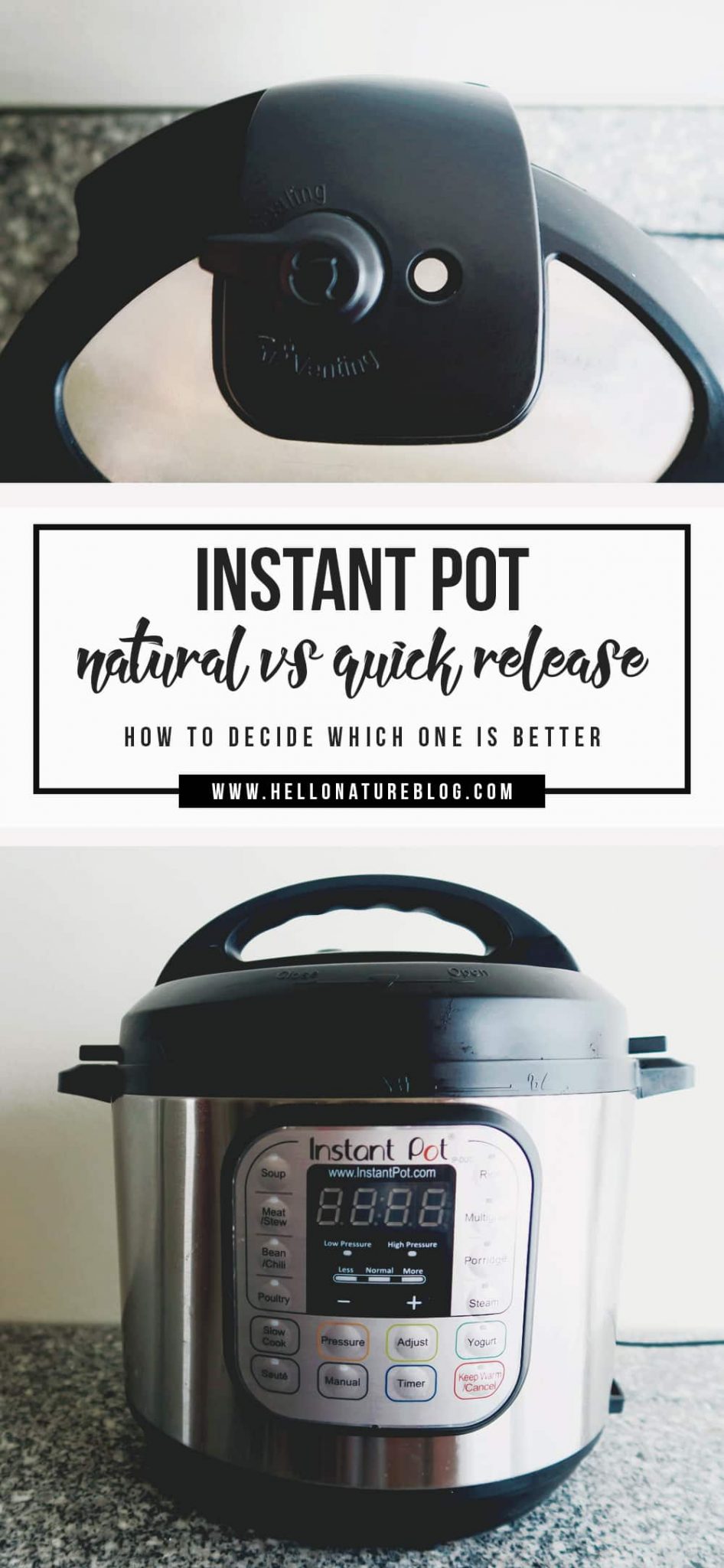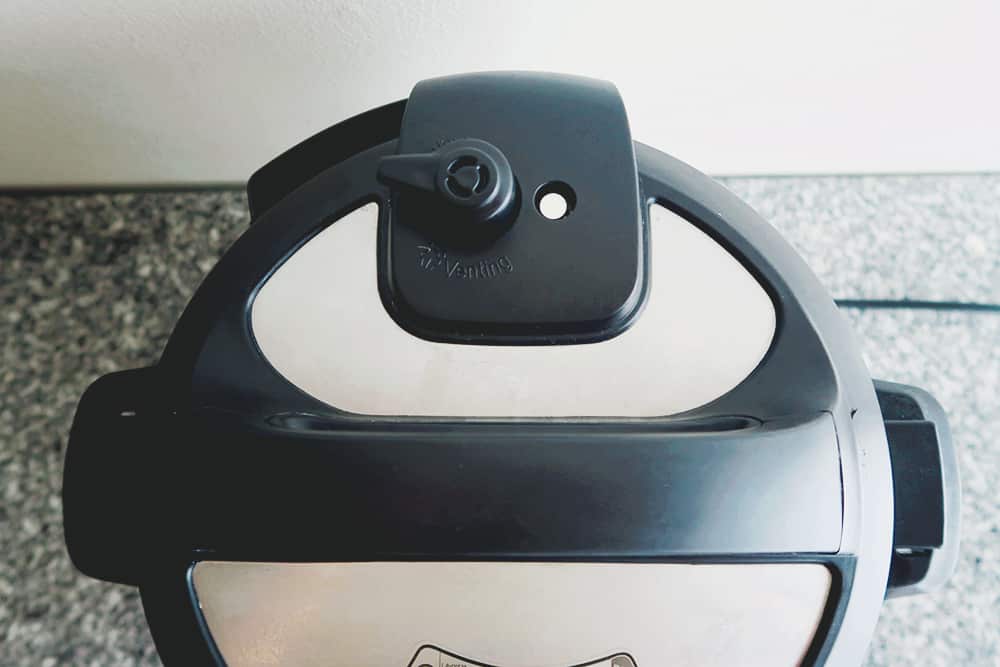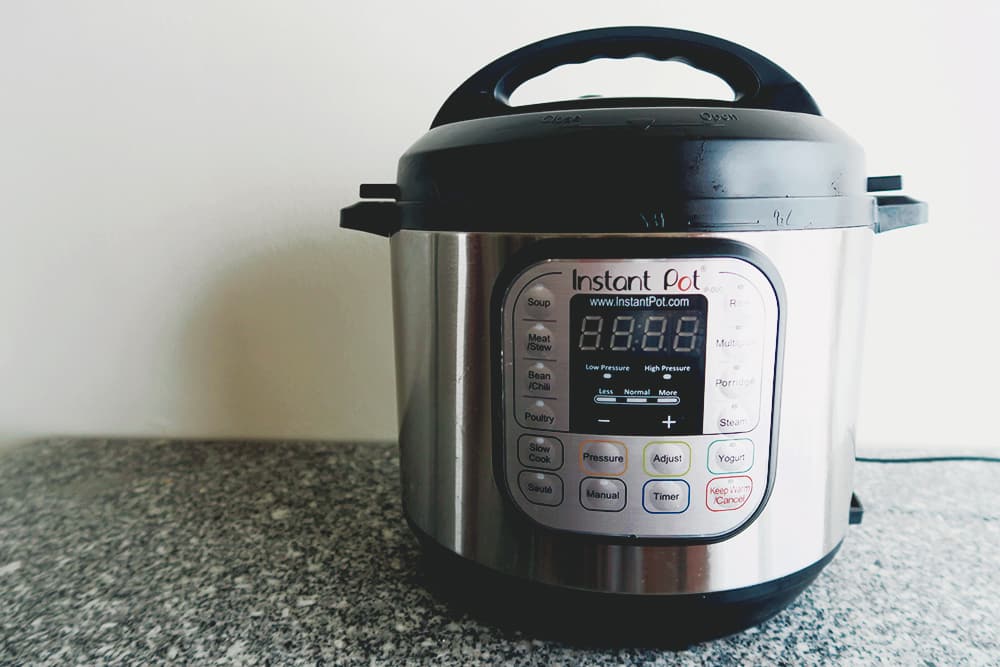Wondering which is better? Is it the Instant Pot natural release method or the Instant Pot quick release method? Learn all about each method and when to use them.
Modern pressure cookers like the Instant Pot are a true gift. They slash cooking times and put out a delicious meal. However, all the features can be quite intimidating. Especially if you’re trying to figure out whether the Instant Pot natural release method or the Instant Pot quick release method is better.
The simple answer is that one is not better than the other.
There are just better times to use the Instant Pot natural method over the quick release method. I’ll explain the different methods so you know when to use them. Once you use them a few times, you’ll master one of the most daunting aspects of the Instant Pot pressure cooker.
How the Instant Pot Pressure Cooker Works
Before I get to the release methods, let me explain how a pressure cooker works. According to Wired, a pressure cooker uses the laws of physics to our advantage. Water normally boils at 212 degrees Fahrenheit (100 C). You max out your cooking temperature at 212 degrees. The boiling liquid escapes as steam.
The Instant Pot pressure cooker changes this dramatically. It traps the steam inside the unit. This causes the pressure to raise and also the temperature. Most pressure cookers can get the temperature up to 250 degrees instead of the normal 212. The awesome thing is every incremental increase in temperature decreases your cooking time in half. Going to 220 degrees reduces your time in half. Going to 230 degrees reduces your time in half again. By the time you get to 250 degrees, you have reduced your cooking time by 16 times!
You now have an extremely pressurized cooking vessel. What are the means for safely releasing this pressure?
Instant Pot Quick Release Method
Using the quick release method with the Instant Pot or any other pressure cooker can be quite intimidating. It is very loud and very messy. The hot steam will shoot out getting water all over your counter or cabinets.
Luckily, there are a few things you can do to minimize the mess and make it safer. If you’re worried about burning yourself when flipping the quick release valve, you can use a long utensil or wear an oven mitt. In order to cut down on the mess, you can put a kitchen towel over the valve or use this handy vent redirector to control the direction of the steam.
Opening the quick release valve for the Instant Pot will cause the pressure and temperature to drop very quickly. This forces the pressurized steam out rapidly out of the quick release valve. Think about what happens when you open a can of soda that has been pressurized by shaking or dropping it. It shoots carbonated foam everywhere.
You might enjoy these Instant Pot Recipes as well:
Now this all sounds messy and scary, but there are some very good reasons to use the Instant Pot Quick Release method. Sometimes you are running low on time and waiting for the pressure to drop naturally can take up to 30 minutes. Food continues to cook when you are waiting for the pressure to drop. There are some foods that are just not good overcooked. Think certain veggies and seafood. Mushy broccoli is not what you’re going for. Overcooked shrimp is just… yuck.
Recipes that are mostly liquid like soup or naturally foamy like oatmeal are not good candidates for the Instant Pot Quick Release method. When you open the quick release valve, not only does steam shoot out but foam does as well. This is extremely messy. It can also cause Instant Pot’s float valve to get clogged with food particles. Also, delicate foods like beans may break apart when the temperature and pressure drop quickly.
Instant Pot Natural Release Method
Remember our soda can example? What happens when you wait a bit before opening a shaken or dropped can of soda? I guess nothing happens. It opens very normally. This is the Instant Pot Natural Release Method.
Waiting 10-30 minutes allows the pressure in the Instant Pot to drop naturally. Once the heat source is turned off, the temperature starts to drop. As the temperature drops, the pressure also drops. Once the Instant Pot’s temperature drops below 200 degrees, the floating valve will fall to the down position. The Instant Pot is no longer pressurized and is safe to open.
So when is it best to use the Instant Pot Natural Release Method?
Resting meat after grilling allows the natural juices to reabsorb into the meat. The same is also true for the Instant Pot. Foamy foods like oatmeal and soup are also great candidates for natural release.
10 Minute Instant Pot Natural Release Method
There is one method that is a happy medium. It’s the 10 Minute Natural Release method. All you need to do is follow the Instant Pot Natural Release Method for 10 minutes and then switch to the Quick Release Method. You’ll still have steam to vent through the quick release valve, but it won’t be much. This method allows you to get the time benefits of the Quick Release with the cleanliness benefits of the Natural Release.
Frequently Asked Questions
How do I open a pressure cooker? If you want to know how to open a pressure cooker, just follow either the pressure cooker quick release or pressure cooker natural release. Instant Pots don’t have a manual locking mechanism on them but some pressure cookers do. You’ll have to manually unhook the latch to open the pressure cooker after the pressure has released.
Does turning off the keep warm feature on the Instant Pot lead to a quicker Natural Release? No. The keep warm light will turn on automatically after cooking has finished. However, the actual feature doesn’t activate until the internal temperature of the Instant Pot goes below 170 degrees. Natural Release occurs at 200 degrees so there is no need to turn off the keep warm feature.
Should I follow the release method listed in a recipe? Yes. Recipes are usually written with the appropriate release method. However, you may need to change your cook time if you use a different method. If a recipe calls for Natural Release and you want to use Quick Release, you should add 10 minutes to your cook time.
Can I run my Instant Pot under cold water to release the pressure more quickly? Heck no! The Instant Pot has sophisticated electronic components. Electronics and water do not mix. If you are using a non-electric, stovetop pressure cooker, then you can run it under cold water to release the pressure. Never, ever run an electric pressure cooker under cold water.
Help! My Instant Pot’s not sealing! What’s wrong? You’ll never get to release pressure if you don’t build pressure first. There are a number of reasons it might be sealing. Be sure that your sealing ring is installed correctly and not dirty or damaged. If it is damaged, replace it immediately. The Instant Pot float valve may be stuck open or dirty. Clean or replace it.





